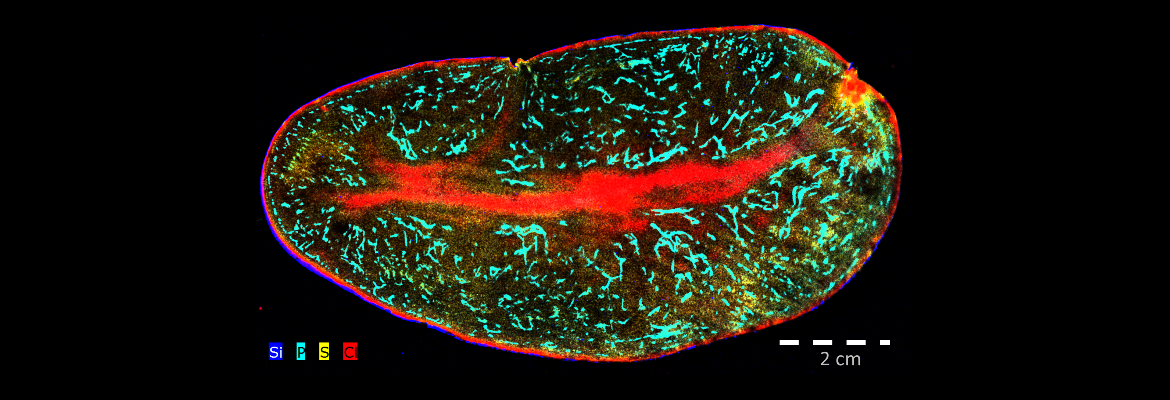

Seeing the World Through Other Eyes: Optimizing the Visualization of Sample Composition by micro-XRF
Analytical Imaging with Micro X-ray Fluorescence
Scanning micro-XRF has developed into a highly informative analytical tool for the study of complex samples across multiple disciplines over recent years. The strength of the technology is based on the advantages of X-ray fluorescence analysis (such as the multi-element sensitivity, the low detection limits, and minimal requirements for sample preparation) combined with a polycapillary lens ensuring a high photon flux as well as high spatial resolution.
A special feature of micro-XRF is the fact that it can provide chemical information for samples over a range of scales, from 10s of centimeters to 10s of micrometers. A full-area analysis of the chemical composition over such scales at micrometers resolution was impossible prior to the introduction of micro-XRF.
In this webinar we will present what is possible with benchtop micro-XRF in terms of state-of-the-art elemental distribution analysis. Topics such as spatial resolution and physical sample effects will be discussed, together with the different capabilities of the M4 TORNADO to optimize and adapt the measurement conditions to the analytical task. Optimal results on an elemental distribution image depend on a variety of factors: firstly and importantly specifying the analytical question, and subsequently choosing the ideal spot size of the X-ray beam, the intensity of the photon flux, and the time of analysis. Besides these technical paraments of the M4 TORNADO and the M4 TORNADO PLUS, understanding the nature of the sample is also an important factor in the optimization process and will be part of the presentation.
If you are interested to know more about micro-XRF, we invite you to join our webinar.
Who Should Attend
- Material scientists
- Geo- and Bio-researchers
- Failure analysis experts
- Users of M4 and M6 software, interested in optimizing scanning conditions
Speakers
Dr. Roald Tagle
Global Manager Application Science, Bruker Nano Analytics
Falk Reinhardt
Senior Application Scientist micro-XRF, Bruker Nano Analytics
Watch this Webinar On-Demand
Please enter your details below to gain on-demand access to this webinar.


